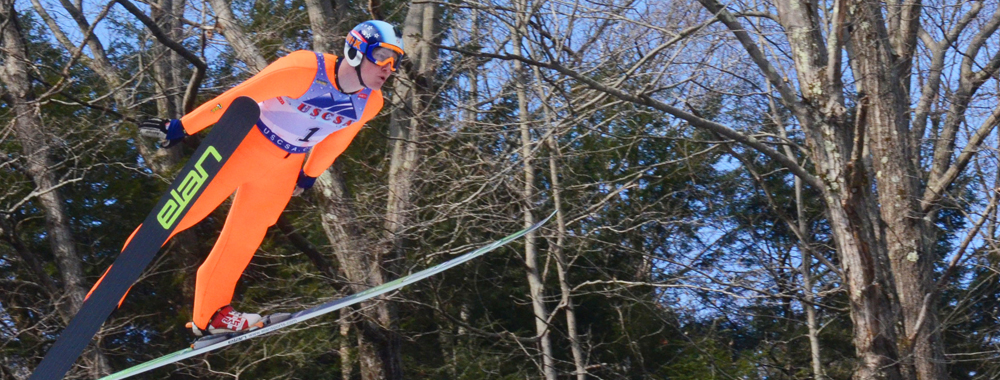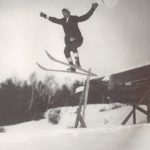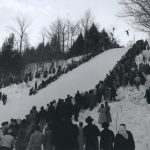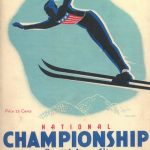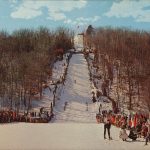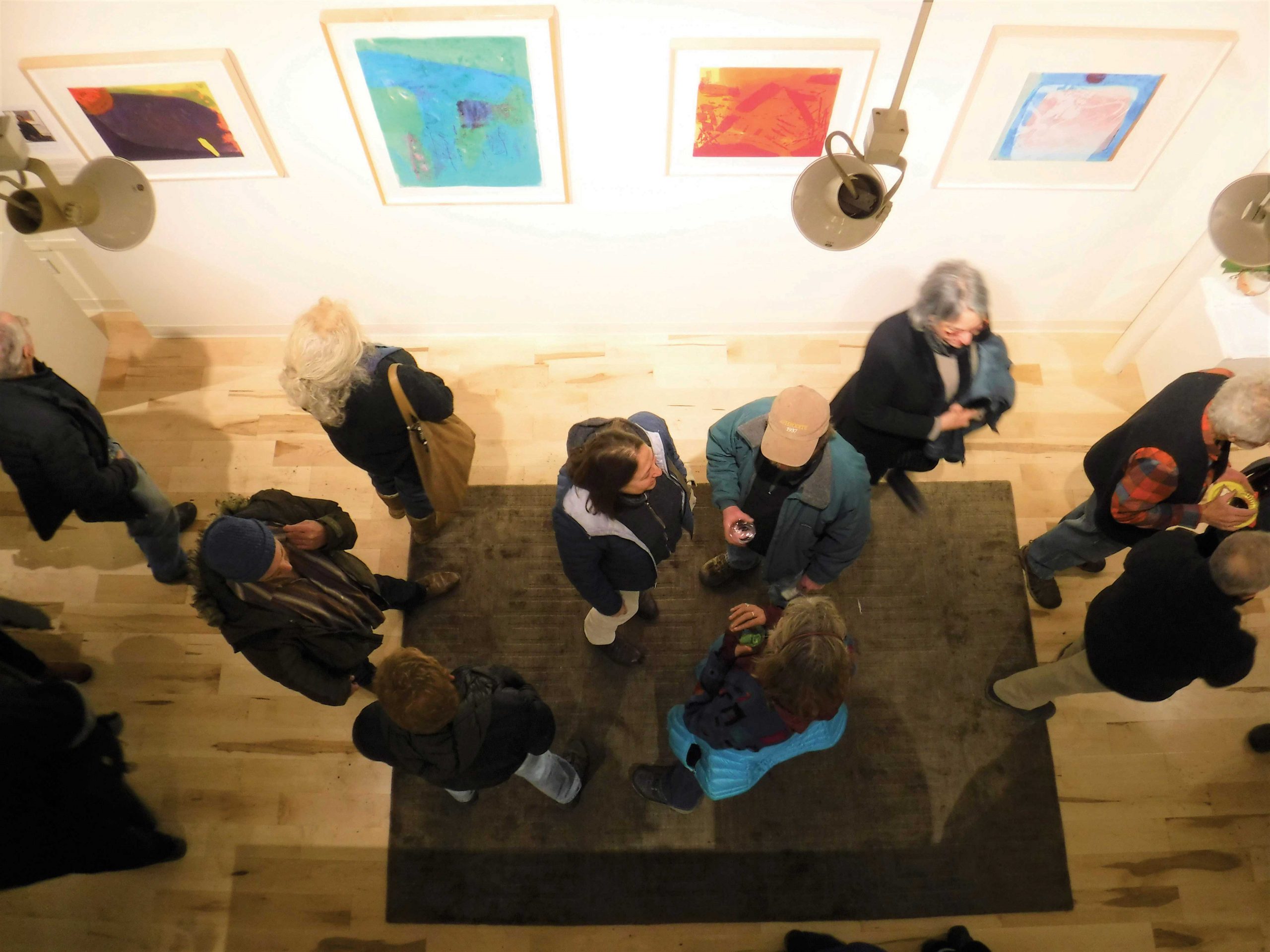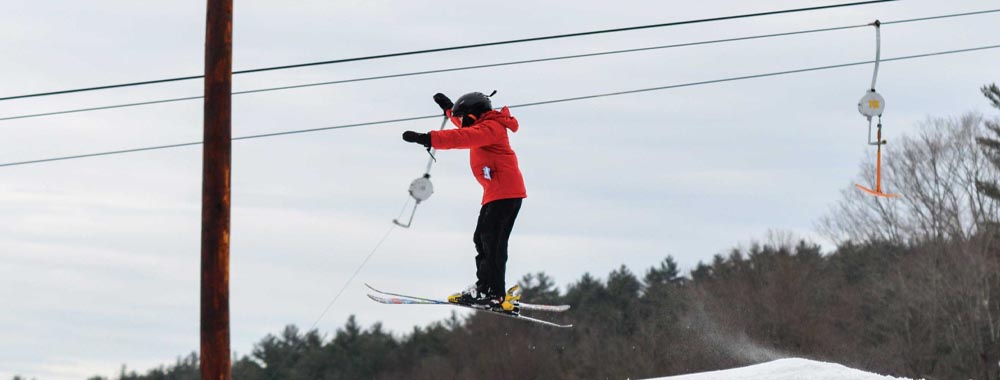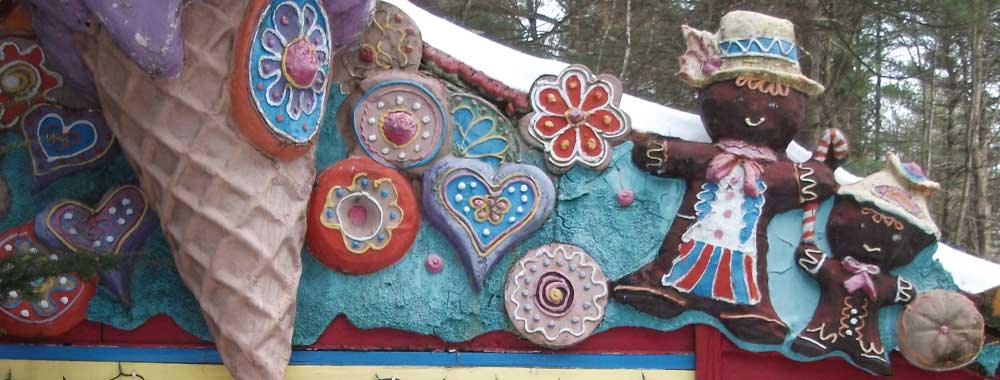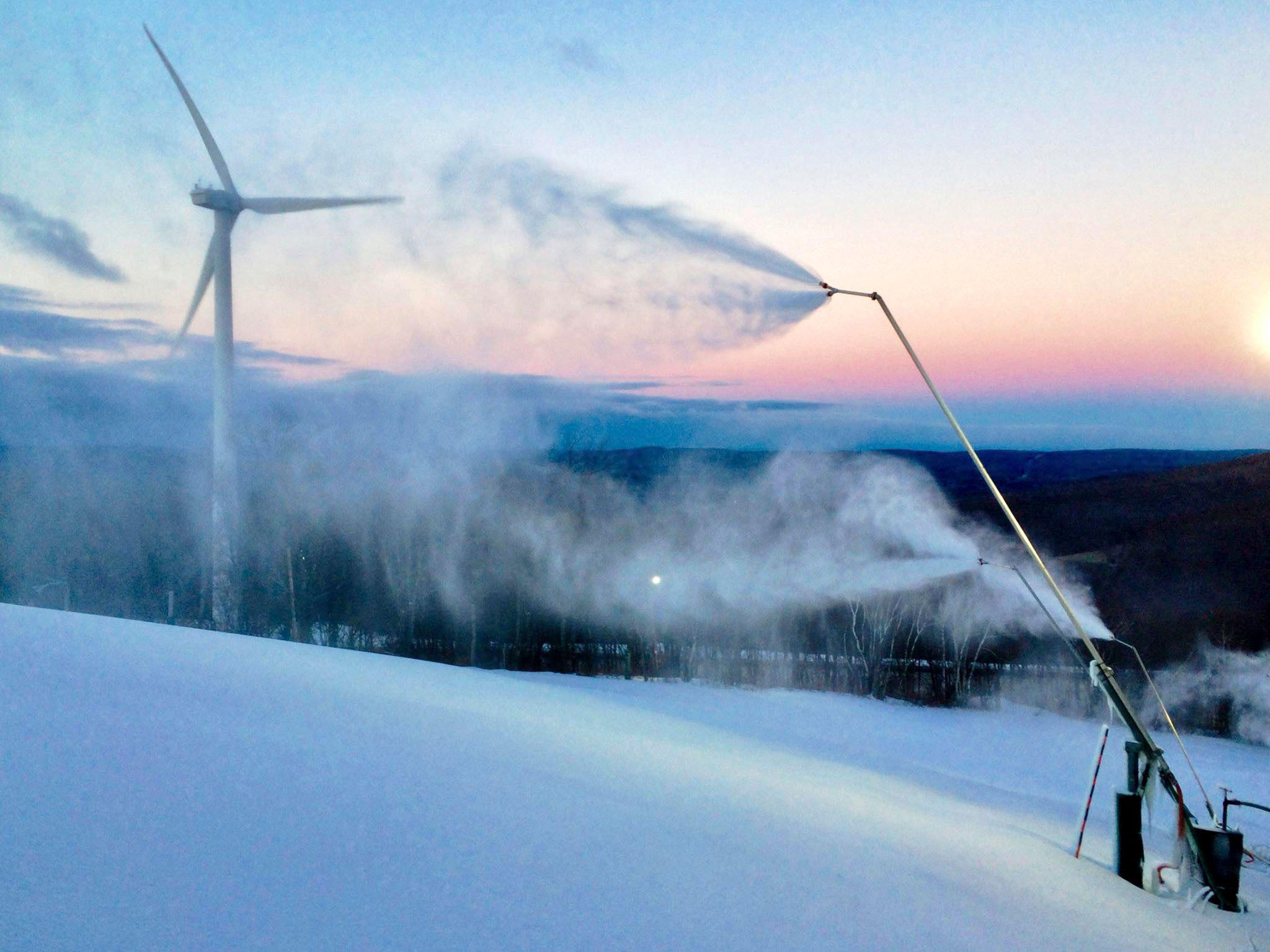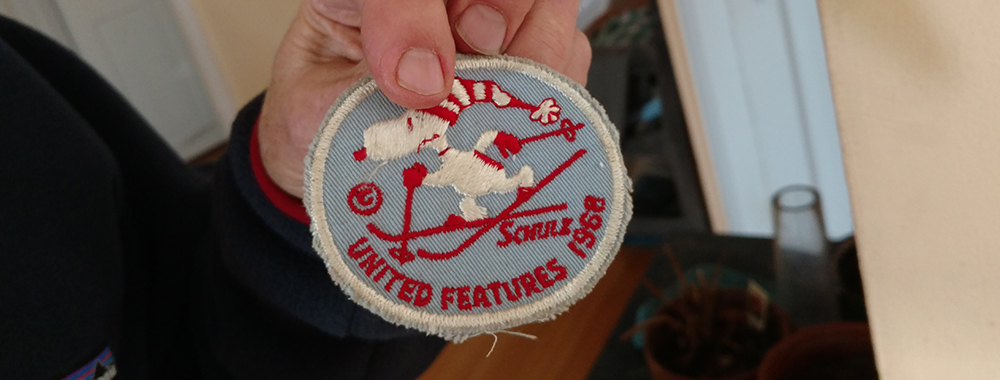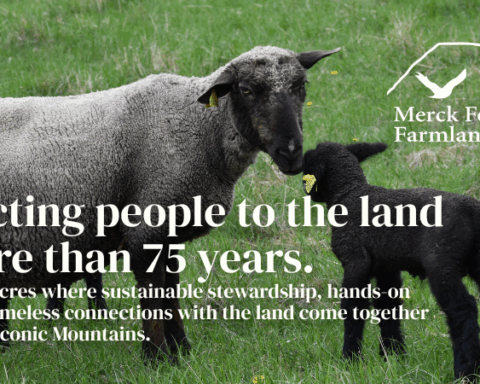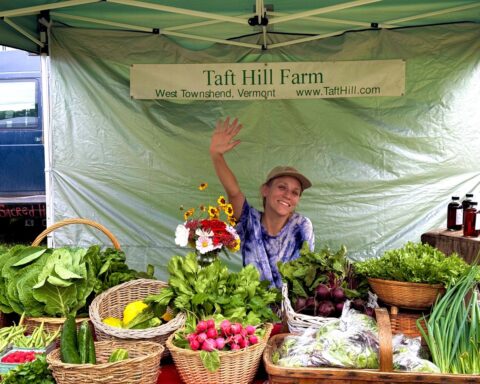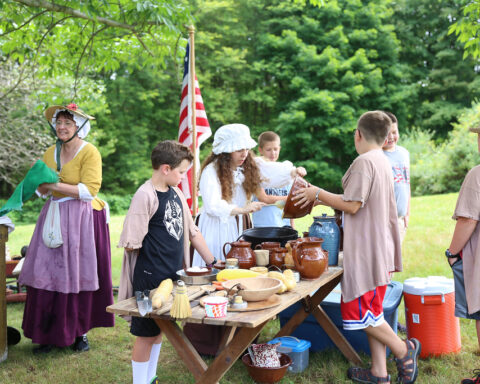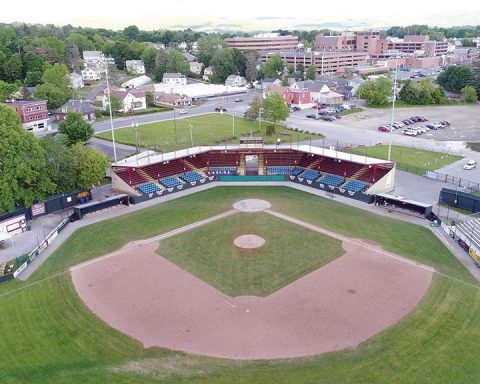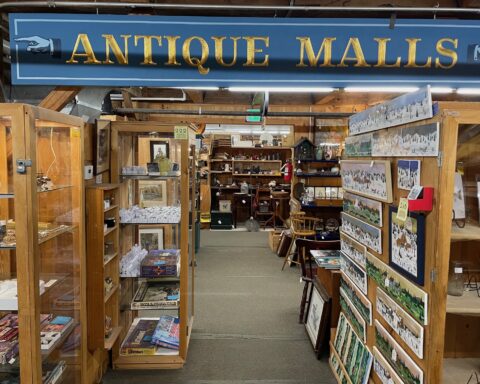By Kevin O’Connor
Vermonter Fred Harris was a young contemporary of the Wright brothers — inventors of the airplane in those dizzyingly heady days of the early 1900s — when the college student first strapped wooden slats to his feet and catapulted off a snow-covered ramp.
“Broke my skis all to pieces,” Harris penned in his diary.
But two more boards brought two more tries.
“Fell twice,” he wrote.
But again, persistence.
“Tried jump several times, and at last made it,” Harris finally proclaimed. “Hurrah! Twice. Oh! Ye! Gods!”
If only Harris could foresee what it all would snowball into.
When the Brattleboro native built the Harris Hill ski jump in his hometown in 1922, he needed only a few planks for a launchpad and two more to lash to his boots to leap off a peak 30 stories high at speeds of up to 60 mph.
But to attract a current-day crowd of world-class athletes and several thousand spectators, a nonprofit group of volunteers had to raise nearly $600,000 to rebuild the venue — now the only Olympic-size ski jump in New England and one of a mere six of its height in the nation.
That’s just the latest wrinkle in a century-long history of rising above seemingly insurmountable odds.
A high-flying history
Neither “skiing” nor “ski jumping” were household words in the United States when Frederick Henry Harris — a sportsman turned stockbroker who lived from 1887 to 1961 — “early saw the light and, gathering disciples to himself, began to preach a gospel,” the late historian Frederick Van de Water once wrote.
A pioneering “extreme skier,” Harris founded the Dartmouth Outing Club — the first such organization of its kind in the country — in 1909, then created the Brattleboro Outing Club in 1922, the same year he built the ski jump with $2,200 of his own money.
Since its opening, Harris Hill has hosted nine national championships, starting in 1924 with the first finals held in the East and continuing up — “aside from a few hardscrabble years when winter was barren and when World War II raged,” a hillside sign says — to the U.S. qualifiers for the 1992 Winter Olympics in Albertville, France.
Gallery: A look back at Ski Jump history
At its zenith in 1951, the jump set athlete and attendance records with 168 sportsmen and 10,000 spectators — fittingly, on the day the facility was officially named “Harris Hill.”
Back before liability insurance and high school hockey, local teenagers considered the sport as common as football, basketball or baseball.
Dana Sprague knows the jump both as a past athlete up on the launch and as its present historian and photographer down on the landing.
Sprague can tell you the hill’s Winged Ski Trophy has been retired by five jumpers who each won at least three times — Torger Tokle of Norway in 1942; his brother Arthur Tokle in 1951; Art Devlin of Lake Placid, N.Y., in 1957; Hugh Barber of Brattleboro in 1974; and Vladimir Glyvka of Ukraine in 2000.
Another one of Sprague’s don’t-try-this-at-home tidbits: “In 1927,” his timeline reports, “Reginald and Carol Kendall of Norwich take a toboggan off Harris Hill and through a flaming hoop.”
The jump is rescued
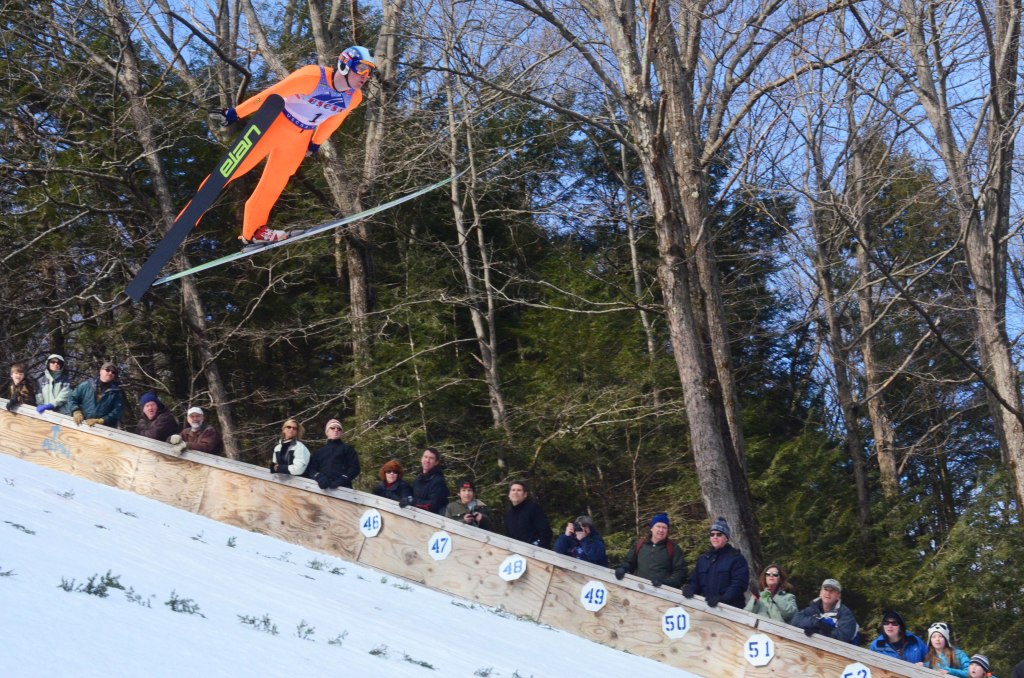
But natural tree-lined hills like the one Harris cleared by hand eventually gave way to metal towers with slick plastic ramps that don’t need help from Mother Nature. The local jump’s survival is due less to its storied past than to the ongoing support of its present caretakers.
In 2005 — the year the late Harris was inducted into the Vermont Ski and Snowboard Museum’s Hall of Fame — the U.S. Ski and Snowboard Association, concerned less with the hill’s history than its seemingly antique wooden takeoff, ruled the jump unsafe and refused to sanction any more competitions.
The venue sat unused for three winters as volunteers sought designs and dollars not only to replace the tower but also to add a steel launch ramp, peak-to-parking lot staircase, required safety features and water and electrical fixtures for snowmaking.
Volunteers feared that funding 50 tons of steel and 160,000 pounds of cement was too big a leap, even with generous community giving. Miraculously, they received an unsolicited $130,000 from a foundation that asked to remain anonymous.
“How many times have rookies like us, who are doing this completely pro bono with little fundraising background, wished for one angel donor who would just rescue them?” volunteer Patricia Howell said upon receiving the gift in 2008.
Supporters would reap a total of nearly $600,000 to reopen the hill in 2009.
Spencer Knickerbocker was a 16-year-old Brattleboro Union High School sophomore at the time when he made history of sorts by being the first athlete to test out the 90-meter jump before its grand reopening.
“I think it was important to have a local do it,” Knickerbocker said after his successful flight, “because the whole community came together for the fundraising support.”
Spectators in the action

Harris Hill, being a real slope rather than a ramp atop scaffolding, is one of the few venues in the country that allows spectators to climb it to eye athletes up close.
“We think it’s a great thing for people to get an appreciation of the speed and skill that’s required,” says Rex Bell, a former coach of the U.S. Olympic ski jumping team who helps lead hill competitions.
Visitors also can see how snowmaking guns funnel and freeze gallon upon gallon of water before grooming machines smooth the result.
“If we get a foot of natural snow and compact that, it’s 2 inches,” says Jason Evans, a Dummerston contractor in charge of hill preparation. “And natural snow melts a lot quicker than manmade snow. No matter how much snow falls, we still make it.”
Because the jump is managed and maintained by volunteers, it opens only one weekend a year — traditionally for a two-day February competition capped by the annual Fred Harris Memorial Ski Jumping Tournament. Harris’ daughter, Sandy, presents the contest’s Winged Ski Trophy, just as her father and mother, Helen, did.
“I want to do this because of how much this community has honored my father,” she says. “It means a lot to me to think Brattleboro has carried on his vision, his passion, his legacy.”
And a history that continues to spark interest. In 2012, the hill celebrated its 90th anniversary with a new coaching tower and the first International Ski Federation cup competition ever held in the United States.
“When most ski jumpers climb to the summit of Harris Hill, they can see all the way to New Hampshire,” Pulitzer Prize-winning journalist Stan Grossfeld wrote in the Boston Globe that year. “But Karin Friberg, 22, who routinely trains with the U.S. women’s ski jumping team, can see Sochi, Russia.”
That’s because Brattleboro welcomed female athletes long before they competed in the Olympics — which began with male ski jumpers at the first Winter Games in 1924 but didn’t allow women until 2014.
As for the future? The hill is reaching out to new generations on its website, harrishillskijump.com. But it’s still grounded just above a cornfield as one of the few natural jumps on the continent.
“Everyone who has contributed to preserve the tradition of ski jumping in Brattleboro can be proud,” volunteer Liz Richards said upon the hill’s recent restoration. “Proud that we did not let this amazing piece of local history become history.”
Ski jump set for Feb. 18-19
Some of the world’s best up-and-coming ski jumpers are set to fly at New England’s only Olympic-size venue this February during the annual Harris Hill tournament in Brattleboro, Vt.
The event will feature athletes from North America and Europe soaring more than 300 feet in the air at speeds of 60 mph during the Pepsi Challenge on Saturday, Feb. 18, and Fred Harris Memorial Tournament on Sunday, Feb. 19.
Gates will open each day at 10 a.m., with trial rounds at 11 a.m., opening ceremonies at noon and competition at 12:45 p.m. The program will offer food and beverage vendors, a bonfire, music, tailgating and appearances by Jumper the cow mascot.
Tickets are $20 for adults, $15 for students ages 6 to 12, and free for children 5 and younger and can be purchased at the gate or online at brownpapertickets.com. Advance discount admission of $15 for adults and $12 for students ages 6 to 12 is available starting in February, with more information at harrishillskijump.com.
Harris Hill, located on Cedar Street, boasts a snowmaking system, so the program will take place regardless of ground cover in surrounding areas. For additional details, visit harrishillskijump.com or the event’s Facebook and Twitter pages.
